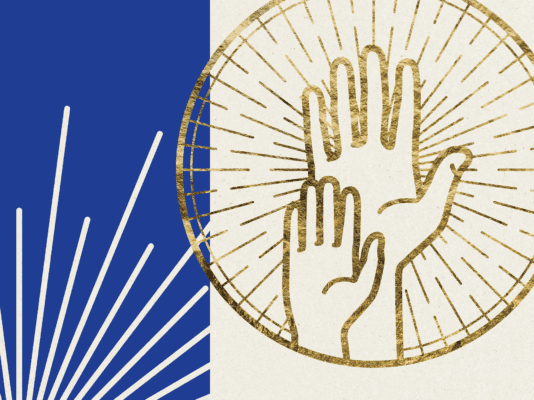The Christian faith and worldview is predicated on a set of nonnegotiable truths. One of these is that human life is inherently valuable. Christians have articulated and acted upon this transcendent understanding of human dignity throughout history, whether opposing infanticide and child abandonment, fighting against chattel slavery or engaging in civil disobedience to protest segregation. The powerful idea that every single person has inherent value is rooted in the image of God, a doctrine expressed in the opening chapter of Genesis.
Although “image of God” has become ubiquitous in Christian literature and conversation in recent years, it has not been robustly defined. Perhaps this is due to the lack of agreement throughout church history on what exactly constitutes image of God, which no doubt stems from the fact that Scripture declares but does not elaborate on the axiom in detail.
But much can and should be said. The fact that human beings are created in God’s image shapes the Christian worldview and affects how we see God, the world and one another. It informs how we understand the rest of the Bible’s story and provides a theological foundation for ethics and engagement. In short, a proper understanding of the image of God should animate everything we do, and as a result, we should endeavor to define it biblically; this will enable us to then survey what issues Christians should care about.
Different understandings of the image of God
Throughout church history, there has been universal agreement that image of God is a significant theological concept. But debate has abounded regarding what the image fundamentally refers to.
Some have argued in favor of a structural view that believes man’s ontological (the nature of being) qualities, such as rationality and cognitive capacity, constitute the image of God. These qualities distinguish man from the rest of creation. Early church leaders, such as Irenaeus and Augustine, as well as John Calvin, held variants of this view.
Another position is the relational view that stresses the importance of man’s relationships. Emil Brunner and Karl Barth advocated this approach, where being made in God’s image fundamentally entails living in relationship with God and others.
A third view is the functional or “vice-regency” position that posits man’s derivative authority to rule on behalf of God defines the image. Unlike the rest of creation, it is man that functions as God’s chief representative in the world. This view stresses the command to exercise dominion (Gen. 1:26-28).
The image of God and Ancient Near Eastern culture
It is evident in Genesis 1 that the Bible is content with simply asserting that man is somehow like God. Further elaboration is not provided. Why is this? As Bruce Ware has noted, technical terminology in speaking or writing is usually introduced and not explained in contexts where the audience is already familiar with specialized language. It seems fair to assume Moses was operating with this expectation. Therefore, considering Genesis 1 in light of the Ancient Near Eastern (ANE) usage of image of God might be helpful.
A seminal study on ANE images is David J.A. Clines' The Image of God in Man. Clines argues that ANE literature contains three commonalities in accounts that utilize image symbolism. First, a deity imputes a substance to an earthly king, enabling him to represent the divine. Second, the empowered king represents the deity by ruling as vice-regent. Third, only the king is ever given this privilege.
Applying this to Genesis, it is reasonable that Moses had this background in mind. First, God breathed into Adam the breath of life. Divine empowerment was requisite to function as God’s image. Second, man is tasked with exercising dominion and ruling as God’s vice-regent. Clines' third characteristic, however, does not apply. The Bible surprises us at this point by affirming that everyone bears God’s image. Clines' reconstruction of the ANE background is helpful and may account for why Moses did not furnish a more precise definition. His original readers would have had a framework to interpret image language and its connotations.
Through the lens of the ANE background, it is clear that certain aspects of the structural, relational and functional perspectives provide a holistic understanding of what it means to be made in the image of God (i.e., the structural serves the purpose of the functional carried out in relationship).
The image of God, therefore, includes both who man is and what he does. Ontological capacities and functionality are inseparably tied because the human person as a created whole is the image of God.
Man is like a statue erected by an ancient king—as the statue bore the image of the king and signified rulership, man bears God’s image in the cosmic temple of the world, representing his authority and dominion. Man is the visible representation of the invisible God. If one wants to know what God looks like, simply look at man, the crowning jewel of creation and the only creature made in God’s image and likeness.
The image of God and cultural engagement
One of the tragic results of sin is that man no longer properly images God; the remnants of the image have been marred. The relationship with our Creator is broken, and redemptive history bears witness to man’s inability to obey and honor God.
But the glorious truth of the New Testament is that restoration is possible through Christ, the perfect image of God (Col. 1:15), whose redeeming work restores the image to repentant sinners and establishes them as co-heirs with Christ.
In this light, the Biblical understanding of man’s creation in God’s image has stunning implications for Christian ethics. Not only is everyone created in God’s image, but every human being is a potential future ruler of the universe.
C.S. Lewis poignantly remarked: “It is a serious thing . . . to remember that the dullest and most uninteresting person you talk to may one day be a creature which, if you saw it now, you would be strongly tempted to worship.”
In the new creation, God will once again set up his image bearers. But this time, God’s vice-regents will be perfect because of their union with Christ. Paradoxically, the new creation has already begun. It was inaugurated when Jesus was raised from the dead and will be consummated when he returns.
And as Christians waiting patiently for this day, we will endeavor to treat people made in God’s image with dignity and respect irrespective of gender, race, age, nationality or economic status because we remember our King’s words that as we did for “the least of these my brothers, you did also to me” (Matt. 25:40).
Thus, we will care for those caught in the vice grip of poverty. We will fight against human trafficking. We will uphold the dignity of the elderly and disabled. We will advocate on behalf of immigrants. We will work for religious liberty and conscience freedom. We will stand for marriage. We will promote racial reconciliation. And we will fight the culture of death in all its ugly forms.
We will do all this out of love for God and concern for those that bear his sacred image.
Join us on January 18–20, 2018, for Evangelicals for Life 2018. Keep an eye out here for more information.










